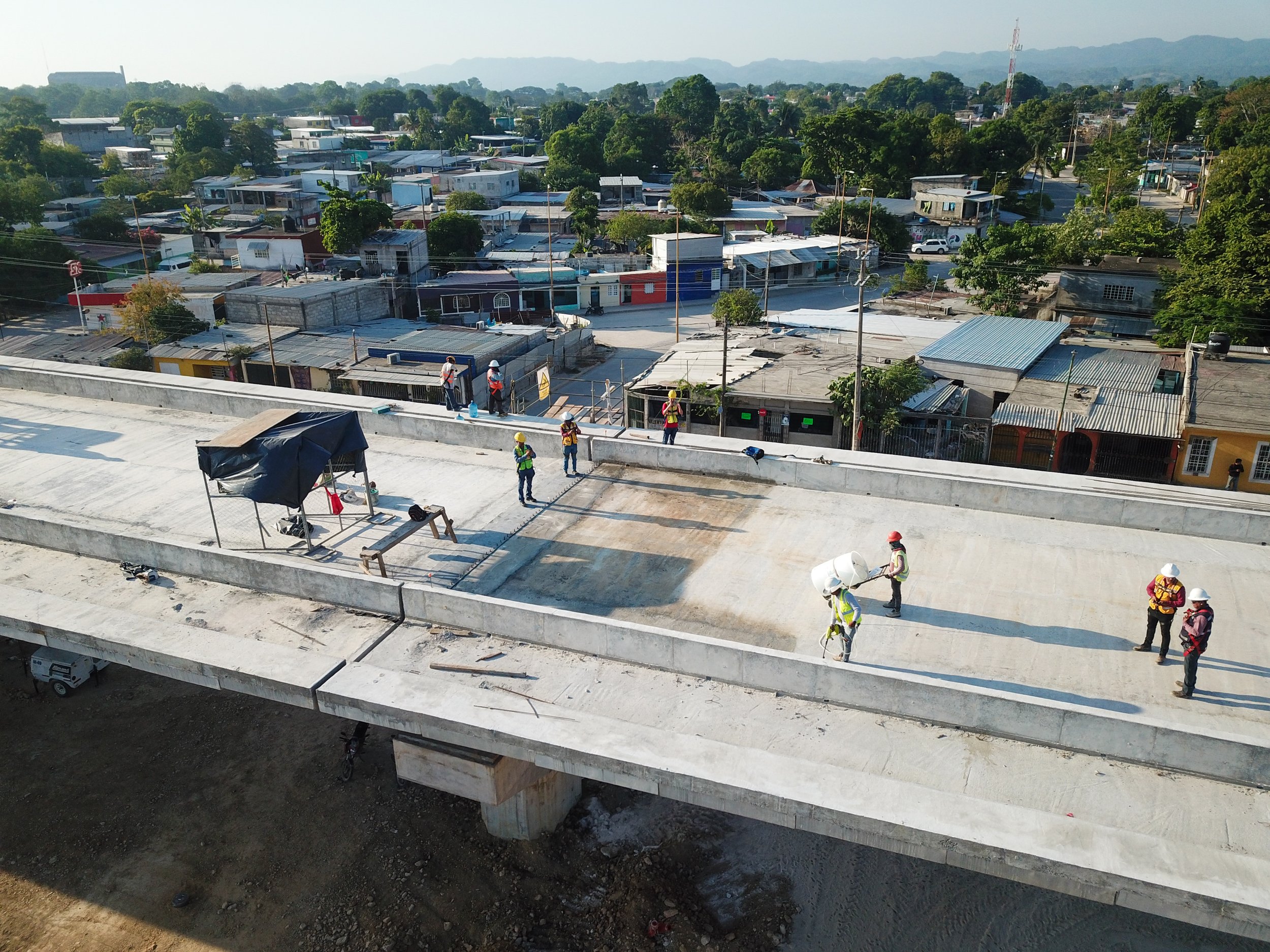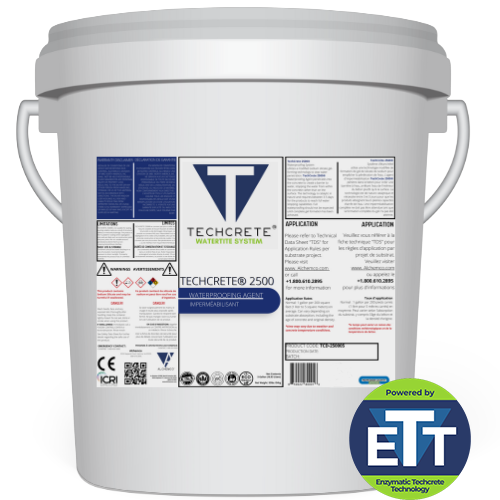
TECHCRETE™
The TechCrete™ Watertite System enhances the durability and sustainability of concrete structures, extending their service life. Ideal for tanking applications under positive hydrostatic pressure, it has been tested to depths of 400 meters (1,312 feet). The system is UL Classified for NSF/ANSI 61, increases surface hardness from 6 to 8 on the Mohs scale, reduces the chloride diffusion coefficient by 89% to 3.5 (10⁻¹² m²/s), and allows 84.1% moisture vapor permeability.
The New Standard in Sustainable Structures
Create a subsurface barrier against future water & environmental damage
HOW IT WORKS
-
HOW IT WORKS -
Water, the master of penetration, seeps into every crack, fissure, and capillary, causing inevitable damage. Our innovative formula infiltrates these voids, forming an auto-regenerative subsurface membrane that seals existing cracks up to 2 mm wide, ensuring continuous protection from water and other harmful elements from inside the concrete. Embedded with a bio-catalyst, the membrane stays reactive within the concrete and triggers a viscoelastic sealing reaction when new cracks form, automatically regenerating to maintain complete coverage. Designed to last the life of the structure, this membrane combines both fluid and elastic properties, allowing it to be applied to flexible surfaces. It penetrates, dries, and protects without altering the structure’s appearance, offering seamless, long-term defense.
VS.
Concrete Overlays - Polymer Based
-
Epoxy overlays are the most common overlay system in the U.S.
They are two-component systems, consisting of epoxy resin and a curing/hardening agent.
Known for their high bond strength and low shrinkage.
Often, no primer is needed if the concrete deck is properly cleaned and prepped.
Applied using a multiple-layer method, also called the broom-and-seed method.
Typically, 2-3 layers of epoxy are applied.
Aggregate (small particles) is spread on each layer as per the manufacturer's guidelines.
After each layer cures, unbound aggregate is removed before applying the next layer.
-
Two-component systems with polyester-styrene resin and organic peroxide as the initiator for curing.
Polyester overlays are usually applied using the premix method.
The material is screeded to grade for even application.
Fine aggregate is spread on the surface for initial skid resistance.
These systems generally require a primer on the bridge deck before applying the overlay.
-
Two-component systems with methyl methacrylate resin and a small amount of organic peroxide as the curing initiator.
Methacrylate overlays are usually applied using the slurry method, mixed with aggregates.
Both the bridge deck and aggregate must be completely dry due to the system’s sensitivity to moisture.
Methacrylate top-coats are available to help bond/encapsulate the aggregate.
Common chemistries used include Poly Methyl Methacrylate (PMMA) and Polyurethane Methacrylate (PUMA).
VS.
Concrete Sealers -Penetrants
-
- Concrete deck sealers are spray-applied liquids designed to cover the entire bridge deck, not just cracks.
- The most commonly used chemistries are Silanes and Siloxanes.
- These sealers penetrate the concrete surface and act as a water repellent (hydrophobic).
- They do not qualify as waterproofing products.
- They cannot seal existing or future cracks.
-
- Silane sealers penetrate concrete but may not be ideal for enhancing and fully protecting surfaces.
- They create a hydrophobic barrier, but their effectiveness is limited in harsh weather conditions.
- Issues like water penetration, freeze-thaw damage, and stains can still occur.
- While they offer some protection, they may not meet expectations for comprehensive or visually pleasing solutions.
-
- Siloxane sealers are known for their water-repellent properties, but their effectiveness is limited.
- They provide only partial protection against water intrusion, which can lead to cracks, pitting, and weakened structural integrity.
- These sealers often perform poorly in areas with heavy rain or constant moisture exposure.
- Durability is a concern, as siloxane sealers typically need frequent reapplication.
- Over time, the protective barrier fades, leaving concrete decks vulnerable to deterioration.
-
- Enzyme Modified Subsurface Membrane Waterproofing (EMSMW) provides long-lasting waterproofing for concrete structures.
- It penetrates concrete and forms a durable chemical bond with its minerals, creating an impermeable barrier against water intrusion.
- This bond is highly resistant to moisture and does not degrade over time, offering consistent protection.
- EMSMW has an auto-regenerative property that activates when minor cracks or voids form, reacting with water to seal them and prevent further damage.
- This auto-regenerative ability ensures long-term structural integrity and protection, lasting for decades.
- EMSMW stands out from traditional methods due to its chemical bonding and auto-regenerative capabilities.







